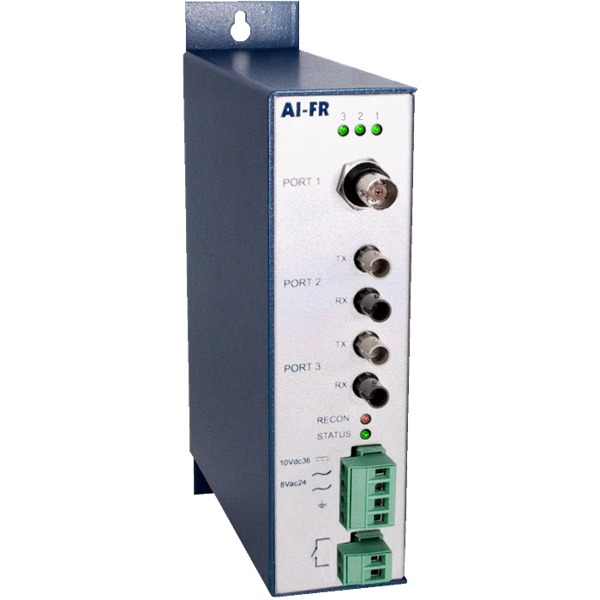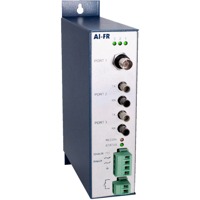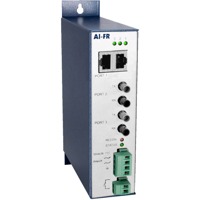AI-FR Series — Redundant Fibre Ring Hubs
ARCNET should be cabled as a star or bus network; never as a ring — but a ring is possible if special conditions are implemented. A ring provides redundant cabling and continuity in case of cable failure. If one cable within the ring becomes disabled for any reason, another path remains available to pass messages. The AI-FR Series is designed and manufactured to achieve fibre optic redundancy in an otherwise non-redundant networking technology.
A fibre optic ring consists of two or more three-port hubs, each with a local drop through which standard ARCNET devices access the backbone and benefit from the redundant cabling. If the fault relay contacts open, a fault is noted but communication maintained.
The AI-FR operates from 8–24 VAC or 10–36 VDC. Redundant power is supported for critical applications.
LEDs aid troubleshooting. Port activity LEDs report ARCNET traffic received. The status LED will flash at a periodic rate when the AI-FR is correctly powered but in idle condition. When lit continuously, this LED indicates that ARCNET traffic is being received and faithfully regenerated to the other hub ports. The RECON LED will flash to show a routine network reconfiguration as an ARCNET node enters or exists the network.
Two models exist. The AI-FR/CXB provides a coaxial cable local drop while the AI-FR/TB5 supports twisted-pair. Either can be panel or DIN-rail mounted.
Signal delay imposes a 2-km limit on the ring when up to five AI-FR hubs are used. By reducing the circumference, more hubs can be employed — so additional devices can share the redundant ring.




